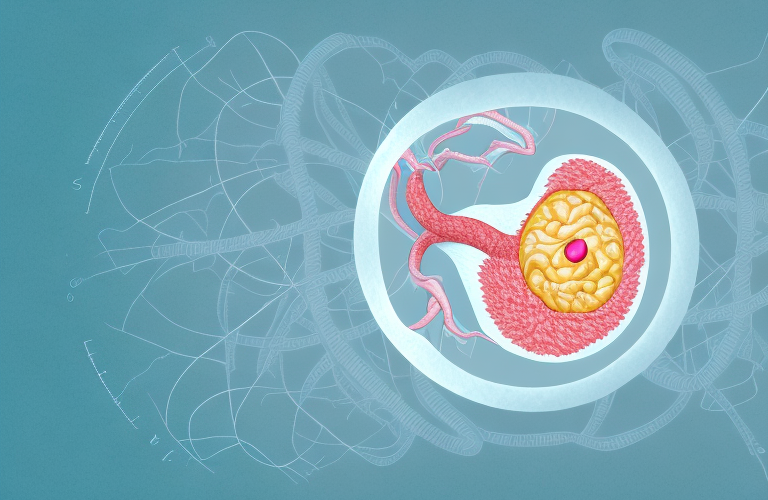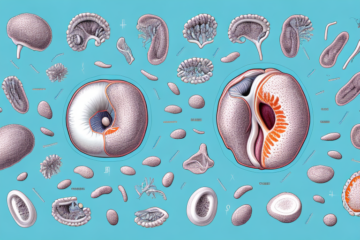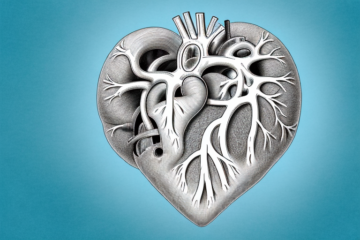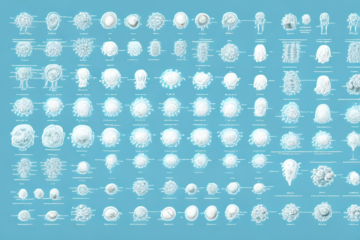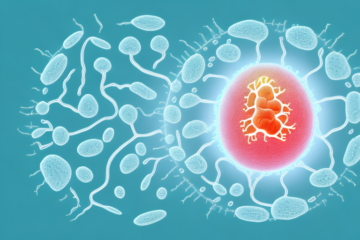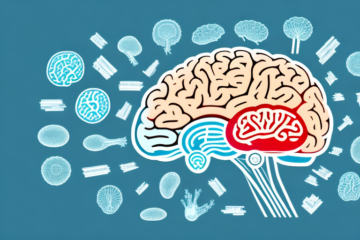Atrophic vaginitis is a type of vaginal inflammation that affects women after menopause. This condition is characterized by a thinning and inflammation of the vaginal walls, which can lead to a variety of uncomfortable symptoms. In this article, we will discuss the anatomy of the vagina, causes and risk factors for atrophic vaginitis, symptoms and diagnosis, and treatment options to manage the condition.
What is atrophic vaginitis?
Atrophic vaginitis is a common condition that affects many women during or after menopause. It is caused by decreased levels of estrogen in the body, which leads to a thinning and drying of the vaginal walls. The condition can cause a variety of symptoms, including vaginal dryness, itching, burning, discomfort during sex, and urinary frequency or urgency.
There are several treatment options available for atrophic vaginitis, including hormone replacement therapy, vaginal moisturizers, and lubricants. Hormone replacement therapy involves taking estrogen in the form of pills, patches, or creams to help restore vaginal tissue and relieve symptoms. Vaginal moisturizers and lubricants can also help alleviate dryness and discomfort during sex.
It is important for women experiencing symptoms of atrophic vaginitis to speak with their healthcare provider. While the condition is common, it can have a significant impact on a woman’s quality of life. With proper treatment, many women are able to find relief from their symptoms and improve their overall well-being.
Understanding the anatomy of the vagina
Before delving further into atrophic vaginitis, it is important to understand the anatomy of the vagina. The vagina is a muscular tube that extends from the cervix to the external genitalia. Its walls are made up of several layers of tissue, including the epithelium, connective tissue, and muscle. The tissue is rich in blood vessels and nerves, which play an important role in sexual function and sensation.
The vagina is also home to a diverse community of microorganisms, collectively known as the vaginal microbiome. These microorganisms play a crucial role in maintaining vaginal health by producing lactic acid, which helps to maintain an acidic pH and prevent the growth of harmful bacteria. Disruptions to the vaginal microbiome, such as through the use of antibiotics or certain hygiene practices, can lead to infections and other vaginal health issues.
Symptoms of atrophic vaginitis
Common symptoms of atrophic vaginitis include vaginal dryness, itching, burning, discomfort during sex, and urinary frequency or urgency. Women with atrophic vaginitis may also experience spotting or bleeding after sex, vaginal discharge, and pain or discomfort when urinating. These symptoms can range from mild to severe and can affect a woman’s quality of life, social interactions, and sexual function.
It is important to note that atrophic vaginitis is a common condition that affects women during and after menopause. The decrease in estrogen levels during this time can cause the vaginal tissues to become thin, dry, and less elastic, leading to the symptoms mentioned above.
Treatment options for atrophic vaginitis include vaginal moisturizers, lubricants, and estrogen therapy. It is important to consult with a healthcare provider to determine the best course of treatment for each individual case.
Causes of atrophic vaginitis
The primary cause of atrophic vaginitis is decreased levels of estrogen in the body, which can occur during menopause or after surgical removal of the ovaries. Estrogen plays a crucial role in maintaining the health and function of the vaginal tissue. It helps to keep the tissue moist, elastic, and strong, and promotes the growth of healthy bacteria in the vagina.
Other factors that can contribute to atrophic vaginitis include certain medications, such as anti-estrogen drugs used to treat breast cancer, and radiation therapy to the pelvic area. Additionally, women who smoke or have never given birth may be at a higher risk for developing atrophic vaginitis.
It is important to note that atrophic vaginitis can also be a symptom of an underlying medical condition, such as an autoimmune disorder or a thyroid problem. Therefore, it is important to speak with a healthcare provider if you are experiencing symptoms of atrophic vaginitis, such as vaginal dryness, itching, or pain during intercourse.
Who is at risk for developing atrophic vaginitis?
Women who have reached menopause or who have had their ovaries surgically removed are at the highest risk of developing atrophic vaginitis. Other risk factors include radiation therapy to the pelvic area, chemotherapy, and certain medications, such as anti-estrogens or aromatase inhibitors used for breast cancer treatment.
Additionally, women who smoke or have never given birth are also at a higher risk for developing atrophic vaginitis. Smoking can cause a decrease in estrogen levels, which can lead to vaginal dryness and thinning of the vaginal walls. Women who have never given birth may also be at a higher risk due to the lack of stretching and hormonal changes that occur during childbirth.
It is important for women who are experiencing symptoms of atrophic vaginitis, such as vaginal dryness, itching, or pain during intercourse, to speak with their healthcare provider. Treatment options may include vaginal moisturizers or lubricants, hormone therapy, or other medications to help alleviate symptoms and improve overall vaginal health.
How is atrophic vaginitis diagnosed?
Diagnosing atrophic vaginitis involves a thorough medical history and pelvic exam. Your healthcare provider may also conduct a vaginal pH test to measure the acidity of the vaginal secretions, or perform a vaginal biopsy to rule out other potential causes of vaginal inflammation or discomfort.
In addition to these diagnostic tests, your healthcare provider may also recommend a blood test to check hormone levels, as low estrogen levels are often the cause of atrophic vaginitis. It is important to discuss any symptoms or concerns with your healthcare provider to ensure an accurate diagnosis and appropriate treatment plan.
Treatment options for atrophic vaginitis
Fortunately, there are several treatment options available for women with atrophic vaginitis. These include hormone therapy, moisturizers and lubricants, lifestyle changes, and alternative therapies.
Hormone therapy is a common treatment option for atrophic vaginitis. This involves the use of estrogen, either in the form of a cream, tablet, or ring, to help restore vaginal tissue and improve lubrication. However, hormone therapy may not be suitable for all women, particularly those with a history of breast cancer or blood clots.
In addition to medical treatments, lifestyle changes can also help manage symptoms of atrophic vaginitis. These may include avoiding irritants such as perfumed soaps and douches, wearing loose-fitting clothing, and practicing good hygiene. Alternative therapies such as acupuncture and herbal remedies may also be beneficial, although more research is needed to determine their effectiveness.
Hormone therapy for atrophic vaginitis
Hormone therapy is the most common treatment option for atrophic vaginitis. It involves taking estrogen either systemically (such as with an oral pill) or topically (as a cream or ring that is placed directly in the vagina). This helps to restore estrogen levels in the body and promote healthy vaginal tissue.
It is important to note that hormone therapy may not be suitable for everyone, especially those with a history of breast cancer or blood clots. In such cases, alternative treatments such as vaginal moisturizers or lubricants may be recommended. It is important to consult with a healthcare provider to determine the best course of treatment for individual cases of atrophic vaginitis.
Moisturizers and lubricants for atrophic vaginitis
Moisturizers and lubricants can also be effective treatments for atrophic vaginitis. These products can help to alleviate vaginal dryness and discomfort during sex, and can be applied as needed. Some examples of vaginal moisturizers and lubricants include Replens, K-Y Jelly, and Astroglide.
It is important to note that while moisturizers and lubricants can provide temporary relief for atrophic vaginitis symptoms, they do not address the underlying cause of the condition. Women experiencing persistent vaginal dryness and discomfort should consult with their healthcare provider to determine the best course of treatment, which may include hormone therapy or other medications.
Lifestyle changes to manage atrophic vaginitis symptoms
Lifestyle changes can also help to manage atrophic vaginitis symptoms. Women with the condition should avoid harsh soaps, douching, and scented products in the vaginal area, as these can further irritate the tissue. Drinking plenty of water and using a humidifier at home can also help to alleviate symptoms.
In addition to avoiding harsh soaps and scented products, women with atrophic vaginitis can also benefit from wearing loose-fitting clothing made from breathable fabrics, such as cotton. Tight clothing and synthetic fabrics can trap moisture and heat, leading to increased irritation and discomfort.
Regular exercise can also be helpful in managing symptoms of atrophic vaginitis. Exercise improves blood flow and can help to maintain healthy vaginal tissue. However, women should avoid exercises that put pressure on the pelvic area, such as heavy lifting or high-impact activities, as these can exacerbate symptoms.
Alternative therapies for atrophic vaginitis
Some women may find relief from atrophic vaginitis symptoms through the use of alternative therapies, such as acupuncture, herbal remedies, or dietary supplements. However, it is important to discuss these options with a healthcare provider before trying them, as they may interact with other medications or health conditions.
Acupuncture involves the insertion of thin needles into specific points on the body to stimulate healing and relieve symptoms. Some studies have shown that acupuncture may be effective in reducing vaginal dryness and improving sexual function in women with atrophic vaginitis.
Herbal remedies, such as black cohosh and red clover, have also been used to alleviate symptoms of atrophic vaginitis. These herbs contain phytoestrogens, which are plant compounds that mimic the effects of estrogen in the body. However, more research is needed to determine their safety and effectiveness.
Preventing atrophic vaginitis: Tips and strategies
Preventing atrophic vaginitis requires maintaining good vaginal health throughout your life. This includes practicing safe sex, using lubricants during intercourse, avoiding douching, and regularly visiting your healthcare provider for gynecologic exams. Women who are approaching menopause may also benefit from discussing hormone replacement therapy with their healthcare provider.
In addition to the above tips, it is important to maintain a healthy lifestyle by eating a balanced diet, staying hydrated, and exercising regularly. Certain foods, such as those high in phytoestrogens, may also help promote vaginal health. These include soy products, flaxseeds, and chickpeas. Additionally, quitting smoking can also improve vaginal health and reduce the risk of atrophic vaginitis.
Addressing sexual concerns related to atrophic vaginitis
Atrophic vaginitis can cause discomfort and pain during sex, which can lead to sexual concerns and decrease sexual satisfaction. Women with atrophic vaginitis should discuss these concerns with their partner and consider using lubricants or moisturizers during intercourse. They may also benefit from exploring new sexual positions or engaging in alternative forms of sexual intimacy.
It is important for women with atrophic vaginitis to seek medical treatment for their condition, as it can lead to further complications such as urinary tract infections and vaginal infections. Hormone therapy, such as estrogen replacement therapy, may be recommended by a healthcare provider to help alleviate symptoms and improve sexual function. Women should also maintain good vaginal hygiene and avoid using harsh soaps or douches, which can further irritate the vaginal tissue.
Potential complications of untreated or poorly managed atrophic vaginitis
If left untreated or poorly managed, atrophic vaginitis can lead to more serious complications, such as vaginal infections or urinary tract infections. It can also increase the risk of developing painful scars in the vaginal tissue or in the bladder. Women who experience persistent or worsening symptoms should contact their healthcare provider for further evaluation and management.
In addition to the aforementioned complications, untreated or poorly managed atrophic vaginitis can also cause discomfort during sexual intercourse, leading to decreased sexual desire and intimacy. It can also affect a woman’s quality of life, causing emotional distress and impacting daily activities. Therefore, it is important for women to seek medical attention if they experience any symptoms of atrophic vaginitis, such as vaginal dryness, itching, or pain during intercourse.
Conclusion and outlook: Living with Atrophic Vaginitis
Atrophic vaginitis is a common condition that affects many women after menopause. While it can cause uncomfortable symptoms, there are several treatment options available to manage the condition and improve overall quality of life. Women with atrophic vaginitis should work closely with their healthcare providers to determine the best treatment plan based on their individual symptoms and needs.
It is important for women with atrophic vaginitis to also prioritize self-care practices, such as avoiding irritants like douches and scented products, wearing cotton underwear, and staying hydrated. Additionally, maintaining a healthy diet and engaging in regular exercise can also help improve symptoms and overall well-being. With proper management and care, women with atrophic vaginitis can continue to lead fulfilling and comfortable lives.

